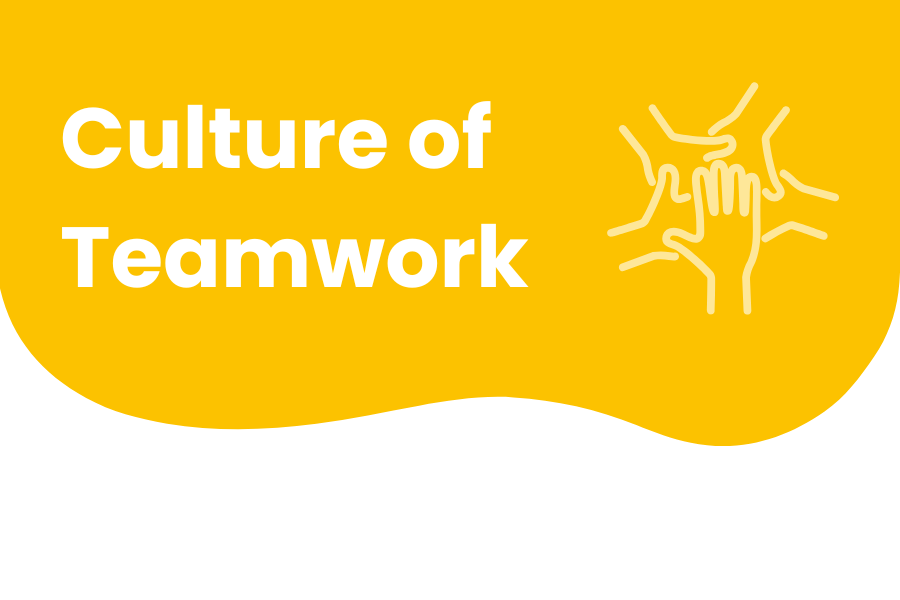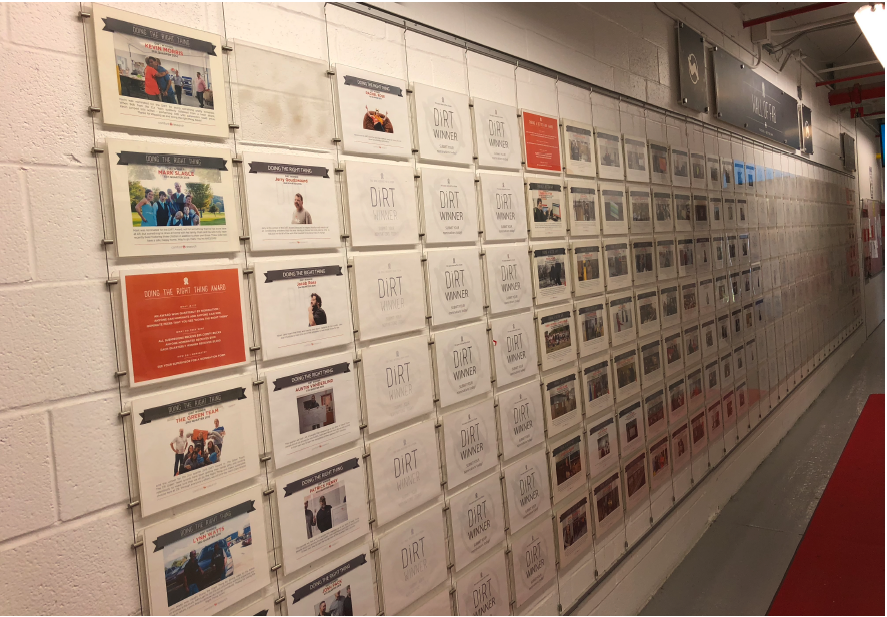Uncovering Core Values: How Values Can Light the Path to Purpose
 I was recently facilitating an exploration into values with the sixteen-member leadership team of a publicly-traded technology company. They had polled their 1,000 employees to determine their core values, only to end up with a generic list of what I call garbage—core value art that hangs on the walls but isn’t remotely felt throughout the organization. Taking the leadership team in a different direction, I supported them in unearthing the driving desires that motivated them as unique human beings, guiding them each to eventually land on a single word that defined who they are in the world.
I was recently facilitating an exploration into values with the sixteen-member leadership team of a publicly-traded technology company. They had polled their 1,000 employees to determine their core values, only to end up with a generic list of what I call garbage—core value art that hangs on the walls but isn’t remotely felt throughout the organization. Taking the leadership team in a different direction, I supported them in unearthing the driving desires that motivated them as unique human beings, guiding them each to eventually land on a single word that defined who they are in the world.
What began as sixteen individual values was whittled down to nine (seven were synonymous). Then I gave them ten minutes to debate amongst themselves and further shorten the list to a final five: perseverance, awareness, dreaming, people, and authenticity. From here, we unpacked the origin behind the words they chose.
One spoke to perseverance—he had survived childhood cancer, never feeling he was allowed the option of giving up.
One spoke of people—his military training had ingrained in him that he was responsible for the man and woman on the left and the right of him.
And another spoke of dreaming—he had lost his wife at a young age and considered taking his own life, not knowing how to move on, only to eventually feel better through the weight he lost taking long walks and contemplating life. In spite of himself, he began dreaming about what was possible for his life again.
Hearing these sixteen origin stories was enlightening for this group, and the nuggets from their stories were woven together to create the definitions of each value. We didn’t waste time thinking our way into the values, instead they were pulled from the guts of the leadership team.
You too have the obligation to extract your values from the guts of your organization. They set the pace for the company, demonstrate what you stand for through your behavior, and attract stakeholders to your business: clients, employees, vendors, and investors. Once you understand the values that drive your people, only then can you address the purpose question: “What were we built for?”
How do you uncover the core values that can light the path to your purpose? Let’s dig in.
Uncovering Your Company's Core Values
Gather together a team of your most influential team members (those that others naturally follow) and dedicate a day to uncovering your values. In a private setting (ideally offsite and conducive to vulnerable conversation and idea sharing) follow these steps:
Lead by example with vulnerability. This exploration is best served if it is explored from the hearts and guts of your people, not their heads and minds. Spending an hour playing the Vulnerability is Sexy game (which we developed for this purpose), or using another mechanism to get people into heart-centered real-talk is imperative before beginning.
Guided Meditation. I use a short, guided meditation to ground the group:
- Invite them into an awareness of their own energy and breathing.
- Activate their imagination by inviting them to extend their feet like roots down into the earth. Breathe into those roots.
- Bring them back to their center and invite them to extend their energy upwards as though through the branches of a tree, up, up, up into the sky. Breathe into those branches.
- Remaining rooted to the earth and extended towards the sky, invite them to breathe into the full expression of their power.
- Invite them to remain aware of what comes to them as you pose this question: “What were you built for?”
- They might see visuals. They might see words. They might land on words that make them feel arrogant or uncomfortable. Just invite them to remain aware of what is passing through them as you again ask the question: “What were you built for?”
- Invite them back to the room with soft eyes, slowly opening their eyes but not making eye contact with anyone else yet.
Writing Exercise. Ask everyone to take three minutes to write down or draw what came to them as you posed that question.
Five Adjectives. Ask them to take one minute to write down the five individual adjectives that best capture what they stand for.
Whittling Down. Give them thirty seconds to select the two words they cannot live without and to eliminate the other three.
Giving Voice. Of the two they have left, tell them they can only speak one aloud. Write those words on a whiteboard or flip chart as they give voice to them. Get every contribution.
Whittling Down. If you have five or less people in the room, you have your words. If you have more, your goal is to whittle the list down to five. Consider the following options:
- Take the synonyms and keep one, losing the rest. For example, you might consider truth and honesty to be synonymous. Decide which one carries the most energy for the group and lose the other.
- Give the group ten minutes to debate the options and shorten their list. Assign a timekeeper to call out the time as each minute passes, and assign a debate leader to drive towards decisions. Your role is to sit back and listen to the energy of the debate. Once they have selected their list of five, challenge them if you heard vigorous debate around a word they decided to lose. You are looking for the values that carry the most energy and provocation.
- There are nearly 200,000 words in the English dictionary. You chose that one. Why?
- Growing up, was there an abundance of that word (value) in your home, or a lack of it?
- Can you remember a time when you felt pain from the lack of that word (value) in your life or your work?
- Can you remember a time when you felt immense joy from the abundance of that word (value) in your life?
- I noticed that you took a huge breath before you mentioned your father.
- I noticed that you paused after you said the words painful childhood.
- I noticed you made a fist with your right hand while speaking about your divorce.
- I noticed you laughed while mentioning her death.
- I noticed you wiped a tear from your eye while speaking of rehab.
- I noticed you sat up straight when talking about your schooling.
- I noticed you stopped breathing when you spoke of the bullying.
Write Down What Holds Energy. On the whiteboard, or another page of the flip chart, write down the word you are exploring at the top. As each person who has chosen that word is sharing, pay attention to the words and strings of words they use that strike you and others in the room. If something hits you in the gut, write it down. If you see people nodding their heads or hear them make audible noises, then what was just spoken holds energy. Write it down. This language is the raw material from which you will be constructing the definition of your values.
Synthesize the Nuggets. Once you have been through every word and each person in the room has unpacked the origin story behind their word choice, ideally, you should have five sheets of paper full of language that held the most energy. Now is the time for the writer in the group, whoever that might be, to go away and synthesize the language that has been unearthed to create the definition of each value. Their goal is to stick to the language offered up by the group as closely as possible.
Choose Your Guiding Principles. Of your five values, choose the two that are your guiding pillars.Shift the Question. Once you have unearthed your values and understand the drivers and motivations of your people, it is time to shift the question from What was I built for to What were WE built for?
- Hang up the definitions of your guiding principles in the room.
- Explore a conversation around the pain you solve for your customers, diving into the most human components of that pain.
- Name the other side of that pain that customers arrive at through interacting with or buying from your company.
- Explore the expertise held by the company at it rawest essence.
Example:
- RTC’s Guiding Principles: Love and Brilliance
- The pain we solve for: Not feeling seen in the world.
- The other side of that pain: Visibility
- Our expertise: storytelling, transformation, artistic expression
Fill Out the Equation. Through the guiding principles of ___ and ___ we use our expertise of _____ and ______ to take customers from (the pain) to (the other side of the pain).
Revise. Now take the raw materials of the equation and finesse your language into a final purpose statement.
Bringing Your Core Values to Life through Company Culture
Consistency is everything. To avoid your values and purpose simply becoming wall garbage, you are going to need a strong plan for follow through. Intention, effort, and investment will be required. Below are some ways you can bring this work to life and infuse it into your culture.
Lead by example. When it comes to your values, if you toss them aside when they are inconvenient to uphold, your people will do the same. Get yourself a coach to hold you accountable to your values, especially when it is most difficult. The investment will pay off in spades as your people see you slow down and make the hard choices required to hold true to your values. Over time you’ll see them follow suit, exponentially creating significant impact.
Celebrate the attempts, not just the successes. Your goal is to create a culture where your people take risks living your values in service of your purpose. If you only celebrate the successes, you actually create fear of trying. Instead, celebrate the attempts, regardless of the outcomes.
Rely on your ambassadors. The people on your team who chose each word are the inherent ambassadors of each value. They know what it is to live the value they chose. Put them in charge of training others in how to live that value. You can also rely on them to highlight who is making attempts at living that value, because they will easily recognize those attempts.
Share the stories. Use multiple mediums to share the stories of people attempting the values and living the purpose. Only by seeing others around them taking risks, will people become comfortable taking those risks themselves.
Turn your values and purpose into art. Your employees all learn in different ways. Artistic representations of your values and purpose and what they mean to people at the company can be emotionally invigorating, memorable, and conversation worthy. When they are particularly impactful, consider infusing them to into your marketing.
Let your purpose and values continue to evolve. Your organizational growth and what you learn from challenges will continue to impact how you are meant to serve the world. And while your purpose might remain relatively unchanged, your articulation of your purpose will likely deepen. Honor that you are a living, breathing organism, especially as your people become more activated. Don't miss out on the additional value being created by assuming you have checked this work off your list and can move on. Living your values and purpose is a lifestyle. Commit and live it and you will reap the rewards.
Want even more purpose-driven leadership articles delivered to your inbox? Subscribe!





Submit Your Comment